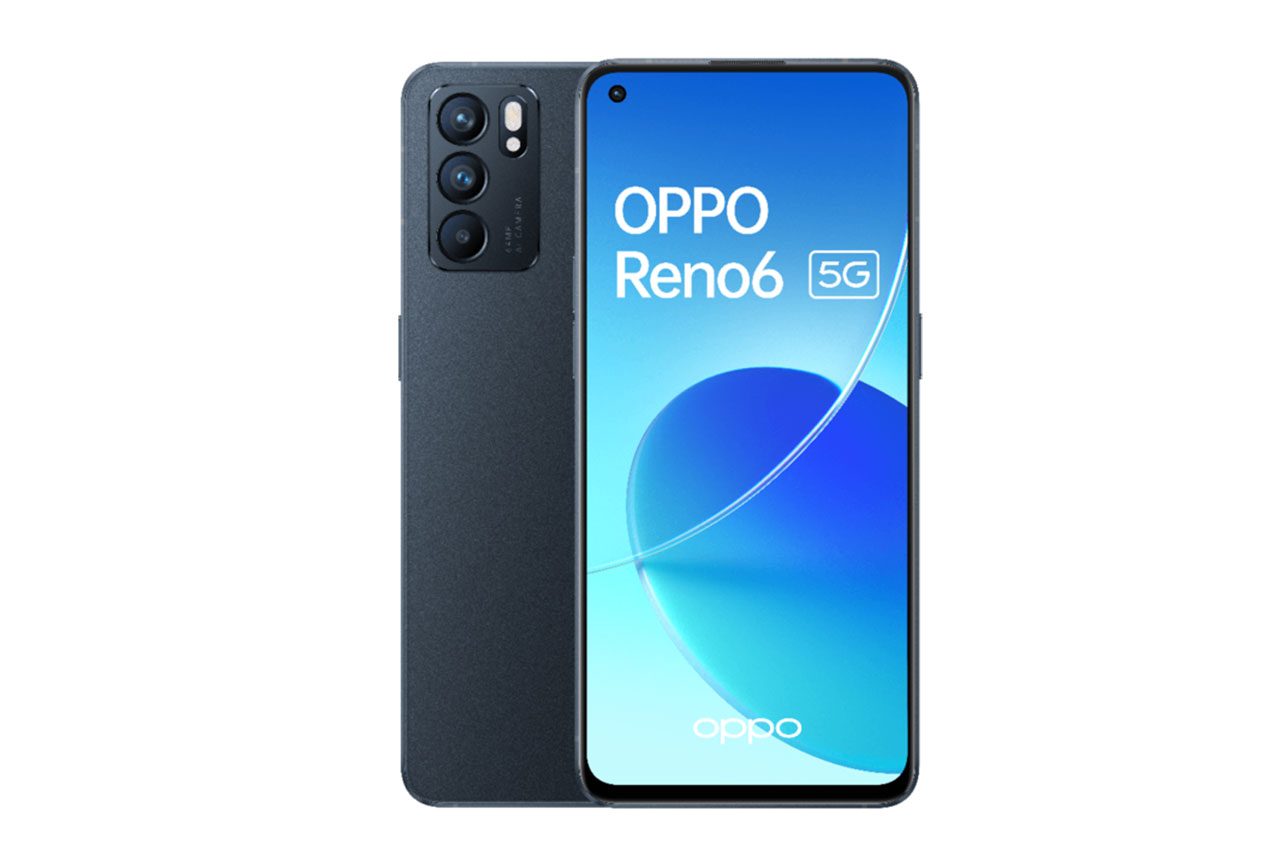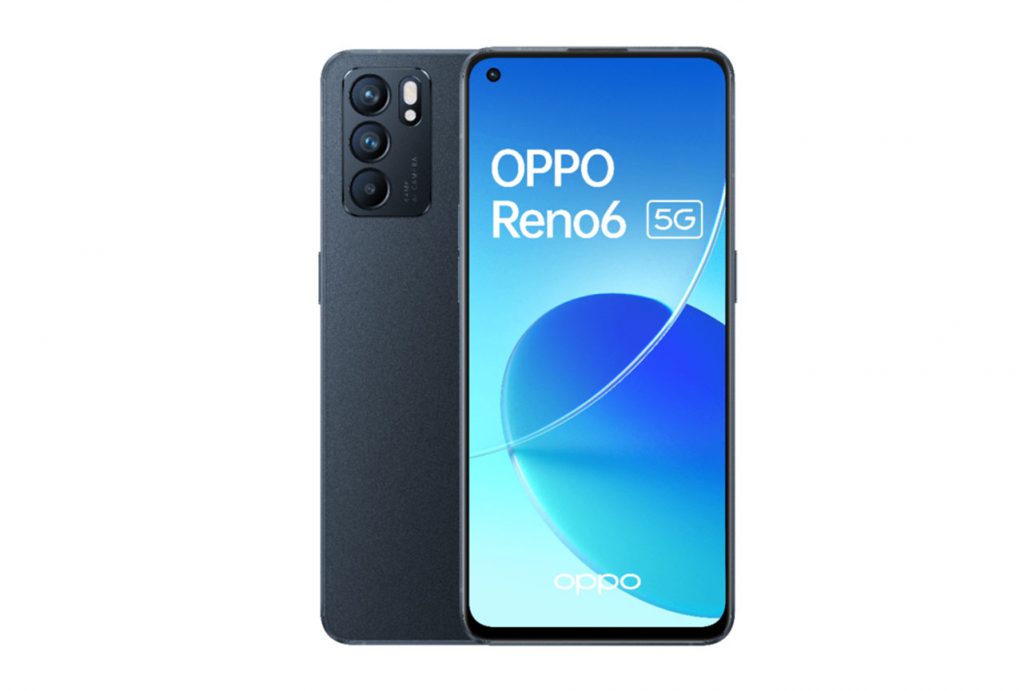Oppo’s latest mid-range phone series is now also available in Europe, a few months after its initial launch in China. Unveiled alongside the Pro version, the Reno6 5G comes with a number of attractive features, including a multi-camera setup with a MediaTek Dimensity 900 chipset, 8GB RAM and 128GB of internal storage, 64 MP main camera, and a 6.4-inch AMOLED display with FHD+ resolution.
Like the Pro model in terms of audio the vanilla version benefits from a collaboration with Dolby. However, it is only equipped with one speaker, thus unable to deliver stereo playback.
We put the Oppo Reno6 5G through our rigorous DXOMARK Audio test suite to measure its performance both at recording sound using its built-in microphones, and at playing audio back through its speakers. In this short review, we will break down how it fared in a variety of tests and several common use cases.
Key Audio specifications include:
-
- One bottom-firing speaker
- Dolby Atmos technology
- USB Type C for headphones (compatible earphones included)
About DXOMARK Audio tests: For scoring and analysis in our smartphone audio reviews, DXOMARK engineers perform a variety of objective tests and undertake more than 20 hours of perceptual evaluation under controlled lab conditions. This short review highlights the most important results of our testing. Note that we evaluate both Playback and Recording using only the device’s built-in hardware and default apps.
(For more details about our Playback protocol, click here; for more details about our Recording protocol, click here.)
Test summary
Scoring
Sub-scores and attributes included in the calculations of the global score.

Oppo Reno6 5G


 185th
185th 31st
31stPlayback
Pros
- Almost void of sonic artifacts
Cons
- Spatial attributes heavily affected by the single-speaker design
- Tonal balance strongly impaired by the significant lack of bass and low-end extension
- Below-average maximum volume loudness
Recording
Cons
- Tonal balance lacks low midrange and bass
- Noise cancellation is a bit overzealous at times, affecting the signal envelope, as well as timbre and localizability.
The Reno6 5G delivers a fairly similar playback performance to its big brother’s, the Reno6 Pro 5G, except in spatial where the vanilla version is heavily impaired by its single-speaker design. On the other hand, as a recording device, it consistently turns in better results across all categories. Let’s dig in a little deeper.
In this short review, we will mainly compare the Reno6 5G to its Pro version. For a fully-fledged review, you can read the Reno6 Pro 5G Audio review.
Playback

Timbre
Oppo Reno6 5G
58
89

Spatial
Oppo Reno6 5G
29
88
In playback testing, the Oppo Reno6 5G earns below-average to average marks in all categories. It delivers a heavily unbalanced frequency response almost identical to that of the pro version, with a strong focus on midrange that’s exacerbated by the lack of bass, high- and low-end extension.
The fact that the phone doesn’t house two speakers combined with its heavily unbalanced frequency response affects all spatial and dynamics attributes: wideness is nil, punch is weak, localizability severely lacks precision, as does bass. Additionally, the left-right balance is de facto shifted to the right side of the device (when in landscape mode), and maximum playback loudness is well below the average. Here are a few sound pressure levels (SPL) measured when playing our sample recordings of hip-hop and classical music at maximum volume:
| Hip-Hop | Classical | |
| Oppo Reno6 5G | 71.5 dBA | 70.2 dBA |
| Oppo Reno6 Pro 5G (Snapdragon) | 73.9 dBA | 68.8 dBA |
| OnePlus 9 | 75.9 dBA | 72.4 dBA |
| Xiaomi 11T | 71.3 dBA | 68.6 dBA |
That said, playback exhibits almost no sonic artifacts, distance rendering is fairly realistic (despite slightly veiled voices), minimum volume is cleverly tuned, and the distribution of incrementation steps across the volume scale is rather consistent, as shown in the graph below:
Recording

Timbre
Oppo Reno6 5G
68
91

Dynamics
Oppo Reno6 5G
71
81

Spatial
Oppo Reno6 5G
66
78

Volume
Oppo Reno6 5G
81
99

Artifacts
Oppo Reno6 5G
68
97
As a recording device, the Reno6 5G tells a pretty different story: the recordings’ tonal balance is much better than the Pro’s, a quality that has a substantial ripple effect on almost all other categories.
Instead of a narrow-sounding and midrange-focused timbre, the phone ensures a clear and natural capture. All in all, treble is satisfying and bright, despite a slight lack of high-end extension and occasional sibilants, and the clear and natural midrange substantially enhances intelligibility. That all said, timbre can become a bit harsh when recording in loud environments, and a lack of low midrange and bass makes recordings sound pretty thin overall.
Recorded dynamics are a better version than what the Reno6 Pro 5G offers, namely great signal-to-noise ratio but an envelope affected by the noise reduction algorithm, and compression. Both fare better with the vanilla version, thanks to the improved frequency response. The Reno6 5G further slightly outperforms its big brother in the spatial category, with a wide stereo scene in landscape mode and in meeting recordings, realistic distance capture, and a localizability that, this time around, is not impaired by the timbre.
Volume also seems to benefit from the tonal balance, with good recording loudness overall, and a much higher maximum level reachable without exhibiting perceivable distortion. Here are some of our test results for volume in quieter scenarios, measured in LUFS (Loudness Unit Full Scale); as a reference, we expect loudness levels to be above -24 LUFS for recorded content:
| Meeting | Life Video | Selfie Video | Memo | |
| Oppo Reno6 5G | -22.7 LUFS | -17 LUFS | -15.7 LUFS | -16.7 LUFS |
| Oppo Reno6 Pro 5G (Snapdragon) | -21.6 LUFS | -16.6 LUFS | -15.4 LUFS | -17.1 LUFS |
| OnePlus 9 | -29.5 LUFS | -20.6 LUFS | -19.4 LUFS | -19.4 LUFS |
| Xiaomi 11T | -26.8 LUFS | -21.2 LUFS | -19.5 LUFS | -20.3 LUFS |
Yet again, artifacts and background recordings fare slightly better in the standard version with a fairly clean and natural capture, despite a slight lack of high-end extension and bass. However, note that the phone is still sensitive to hand occlusions when recording, and subject to phase issues as well as sudden fluctuations in both volume and timbre (due to the noise reduction algorithm). You can check for artifacts yourself in this sample recording:




DXOMARK encourages its readers to share comments on the articles. To read or post comments, Disqus cookies are required. Change your Cookies Preferences and read more about our Comment Policy.